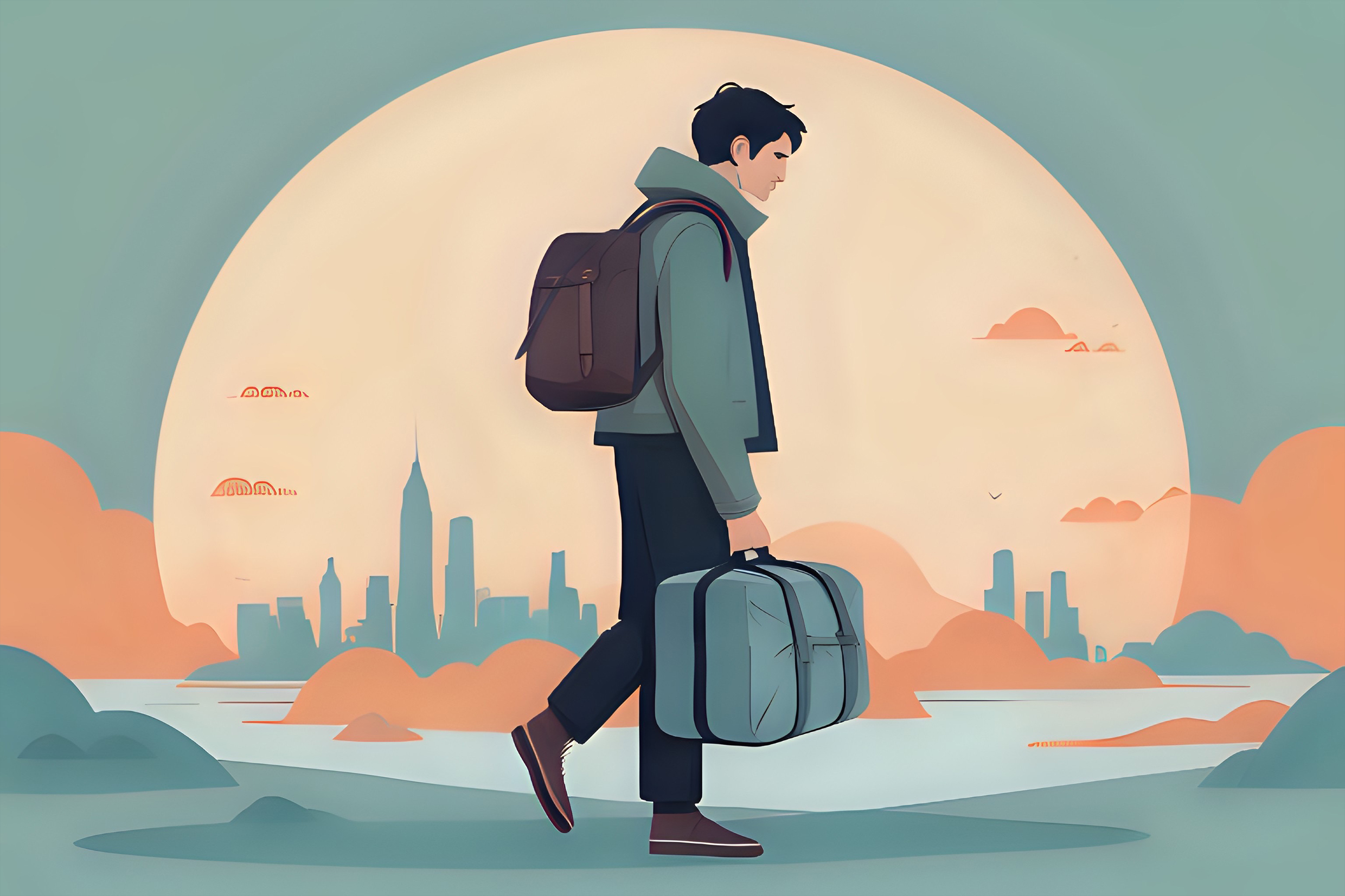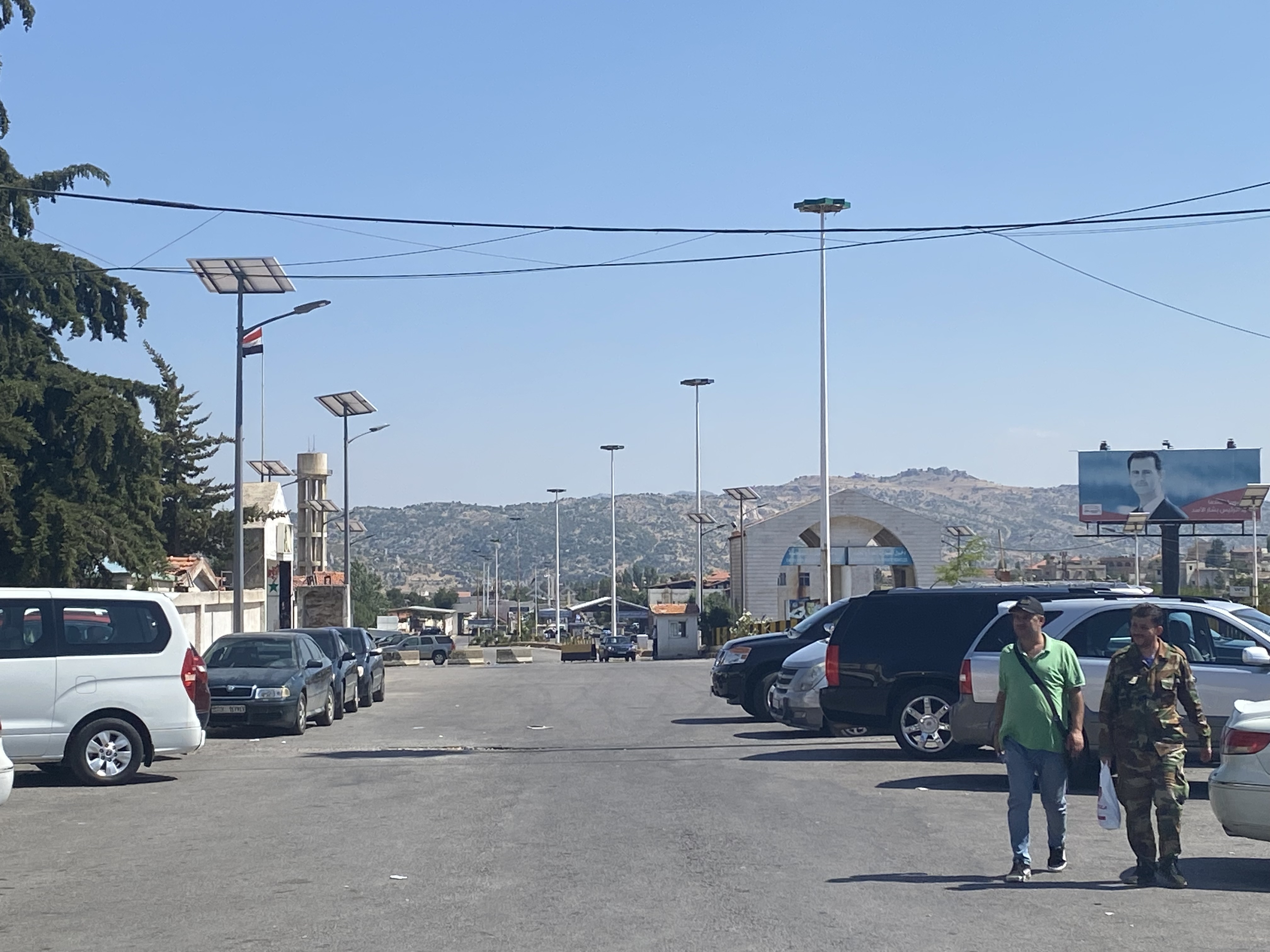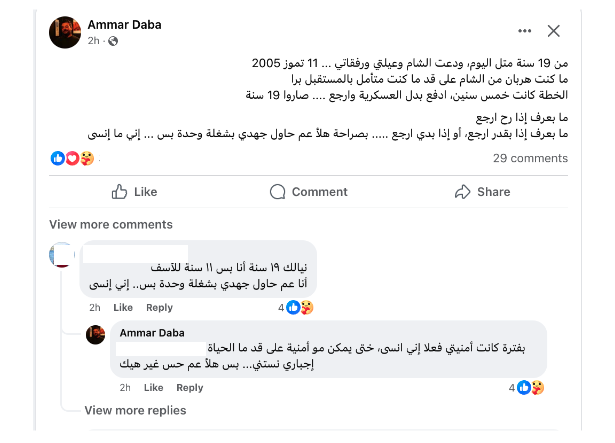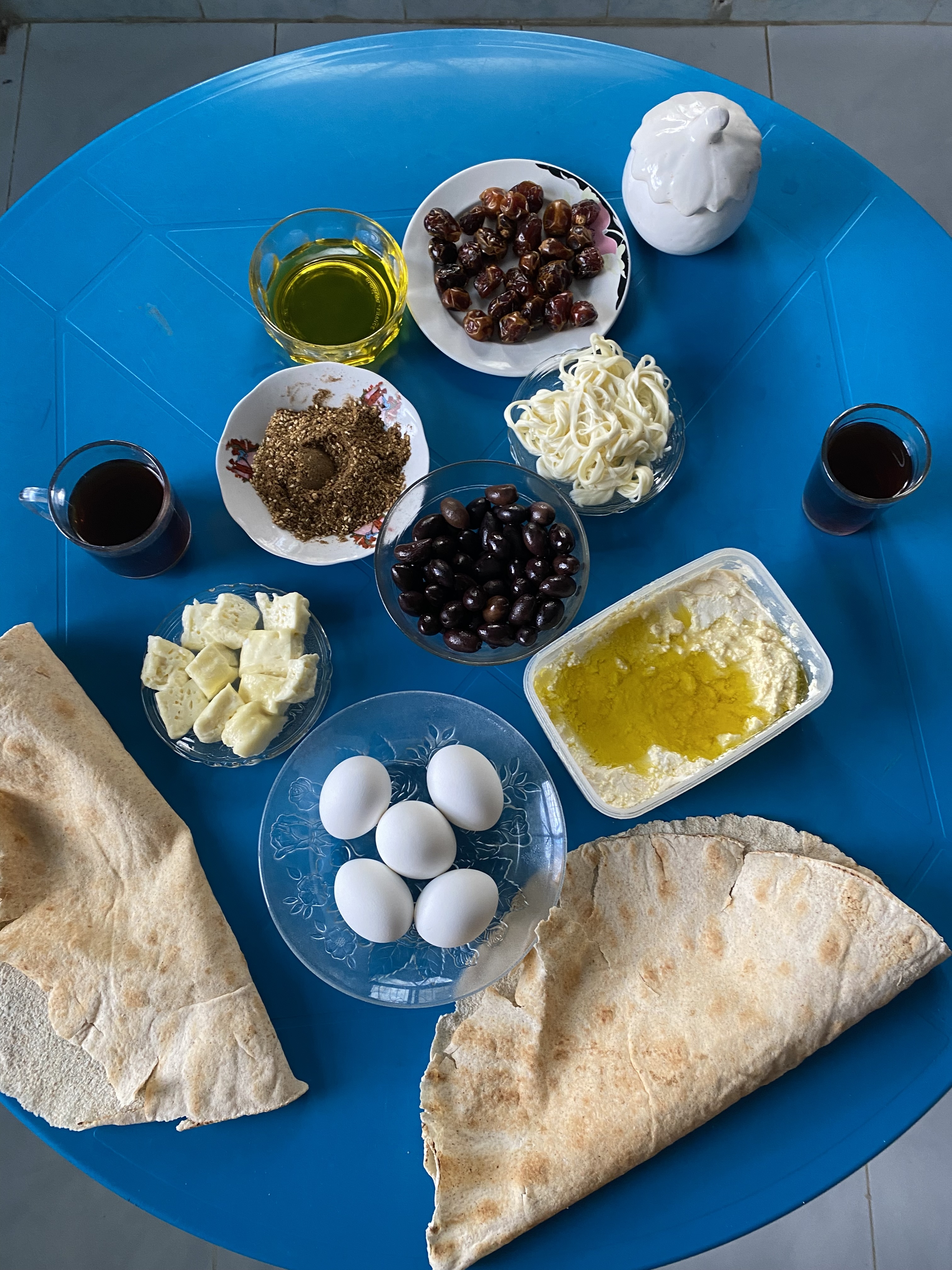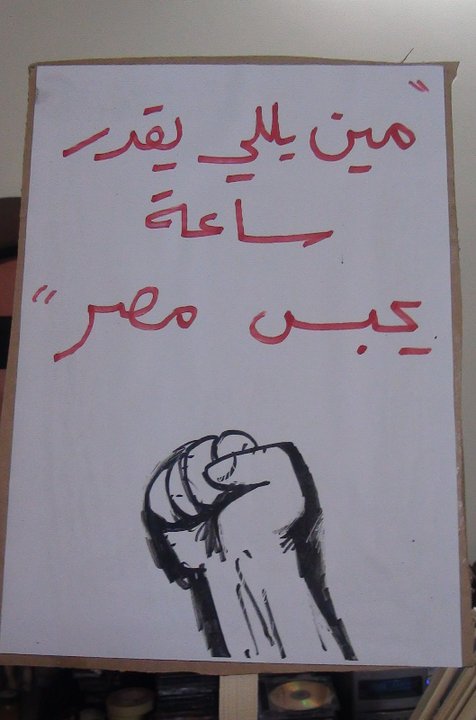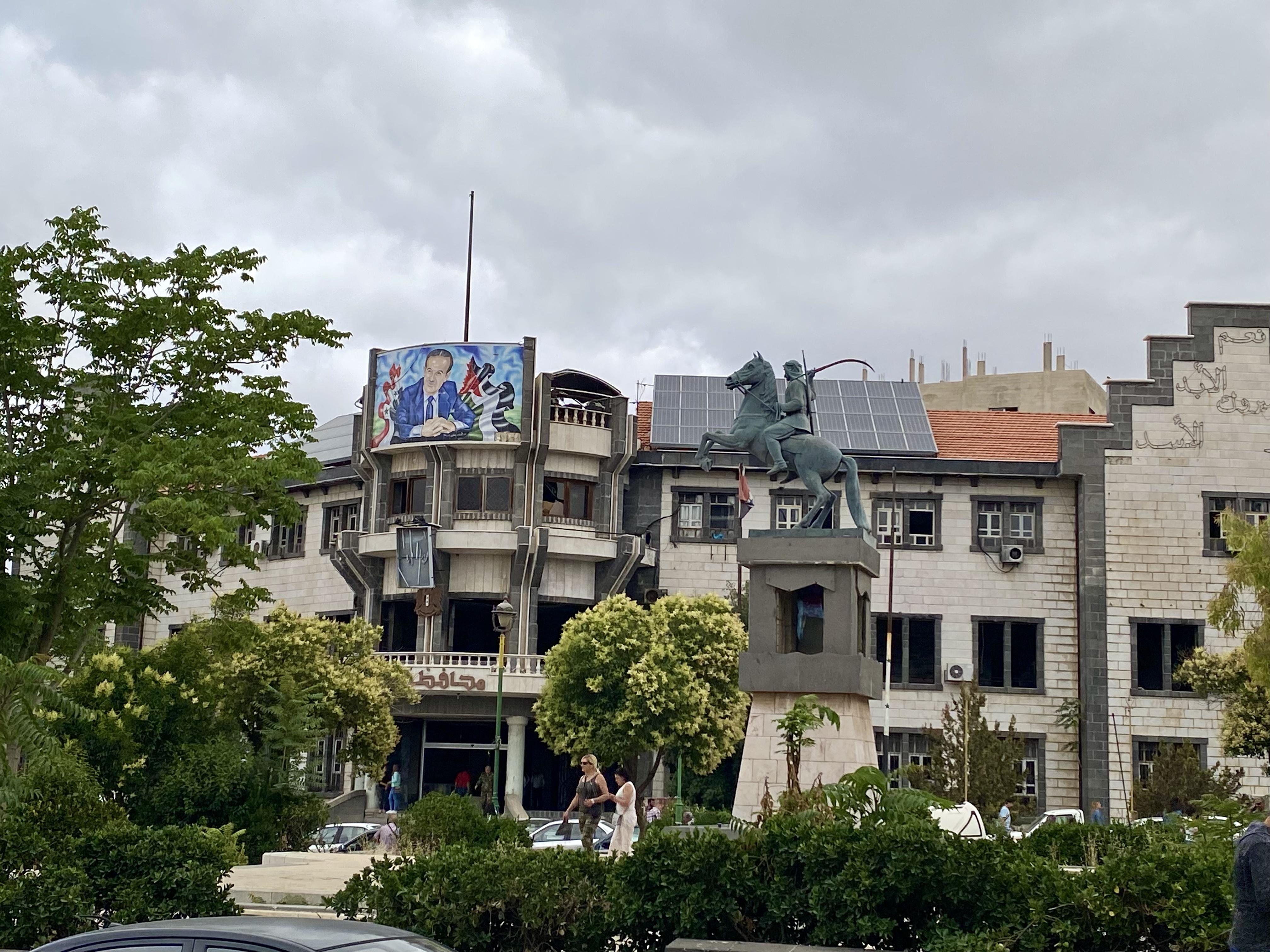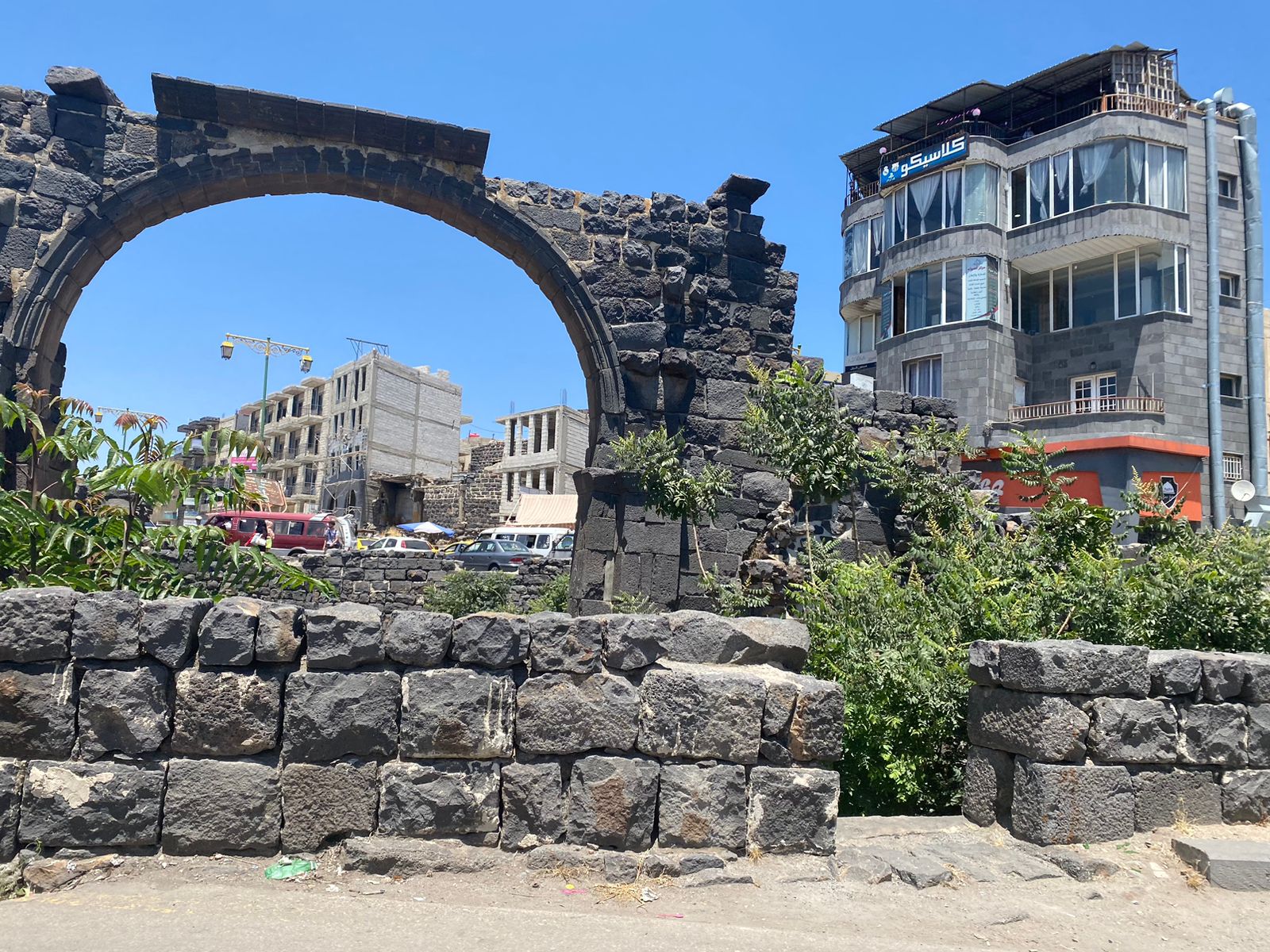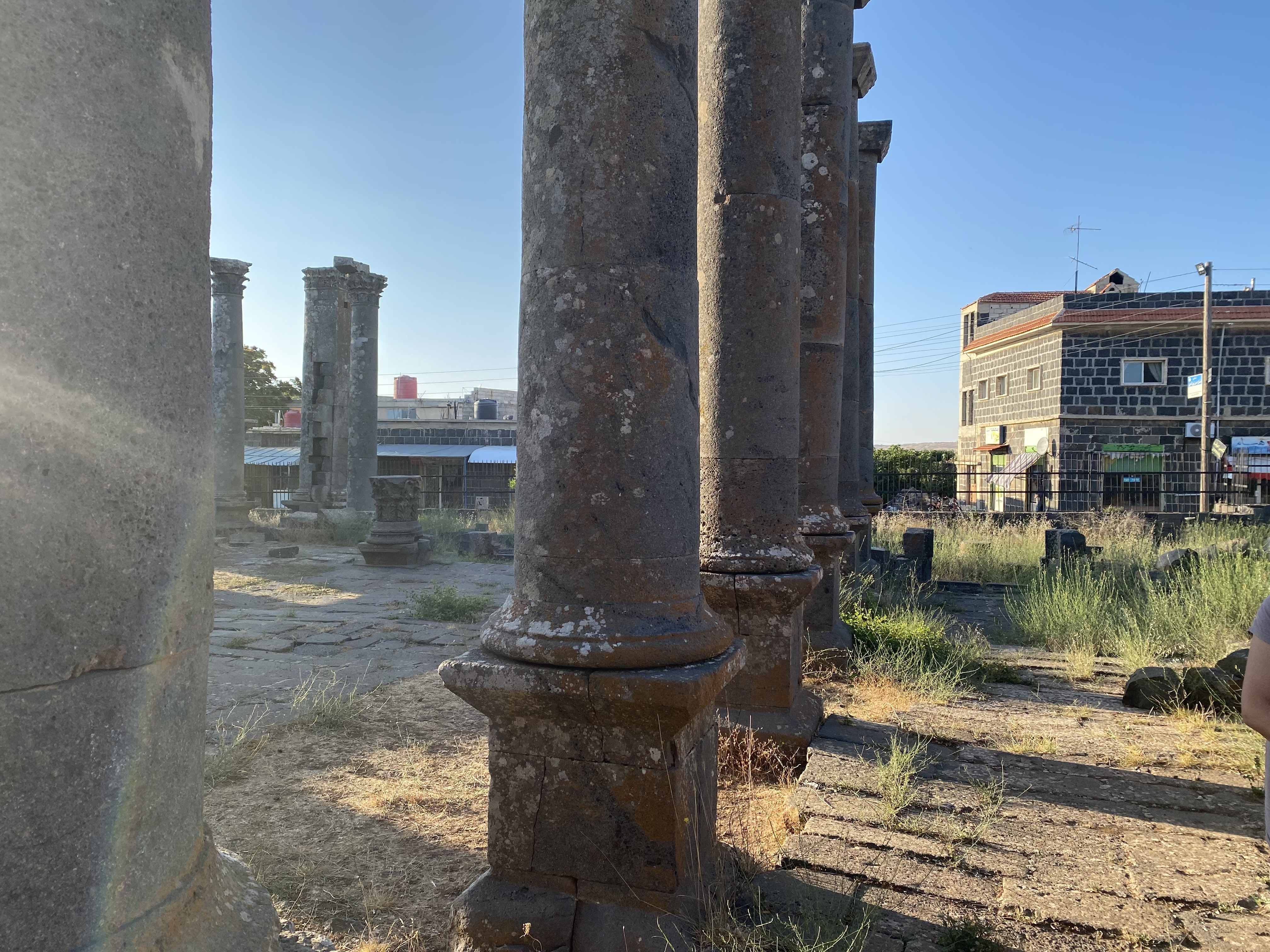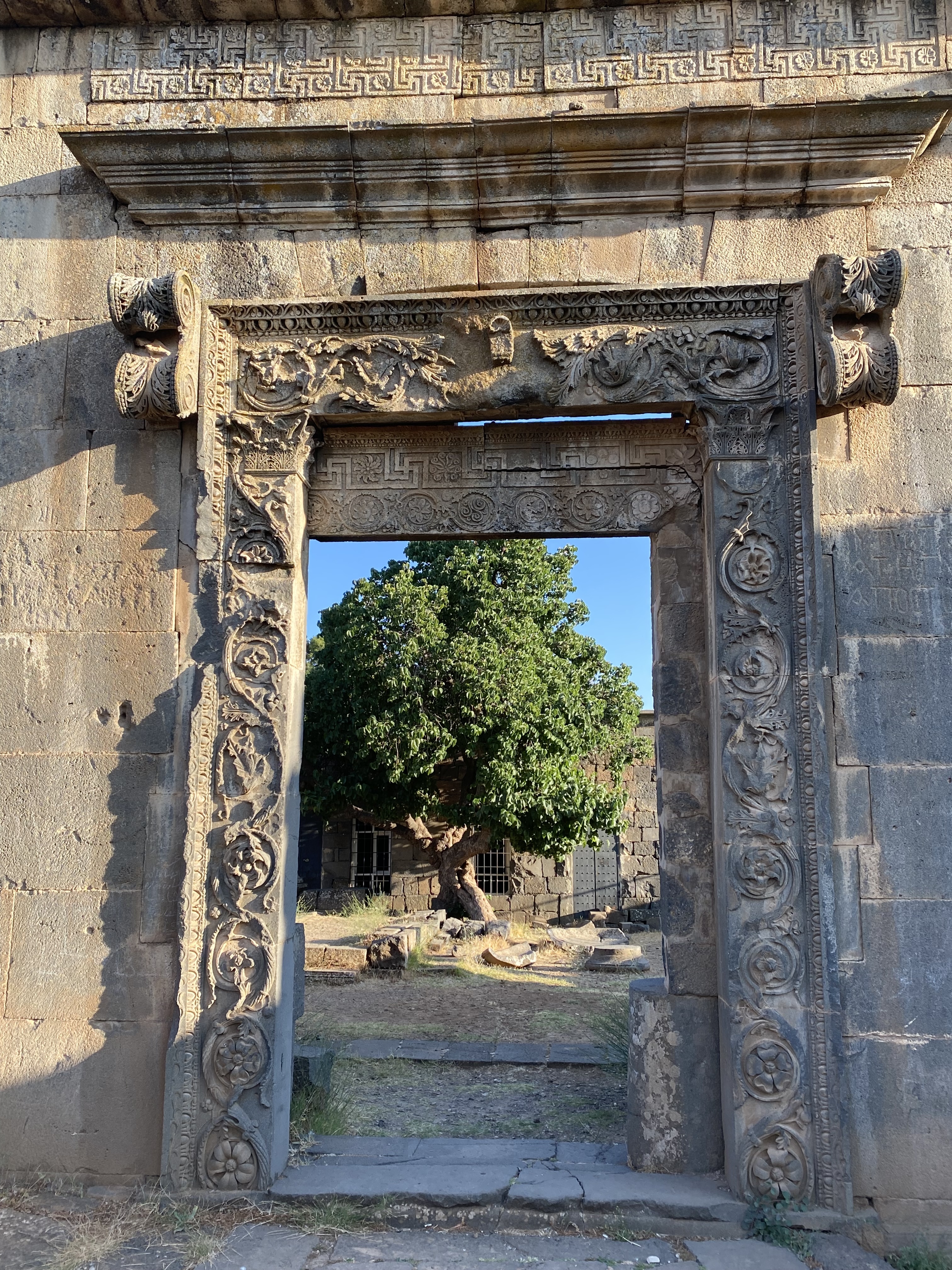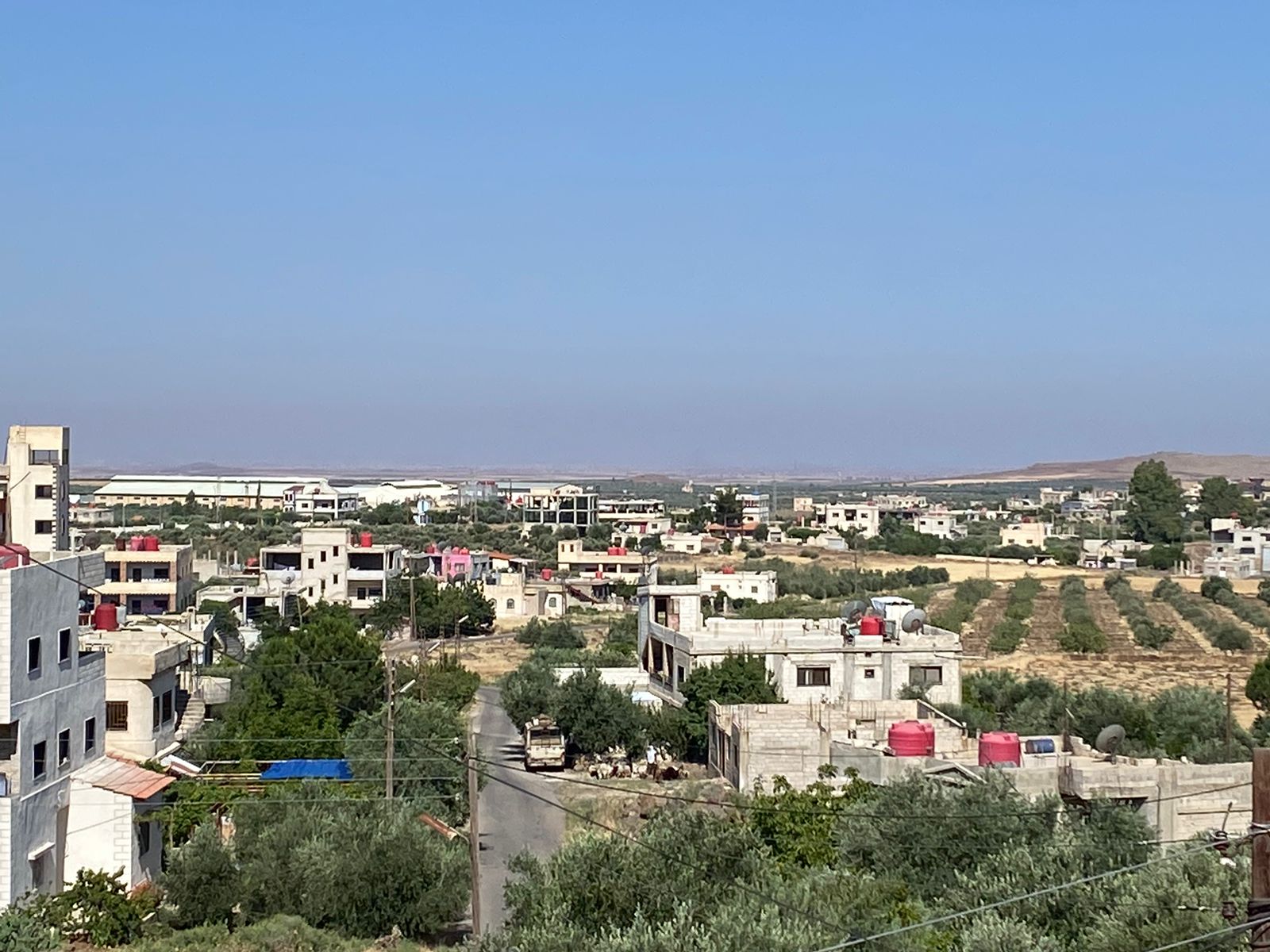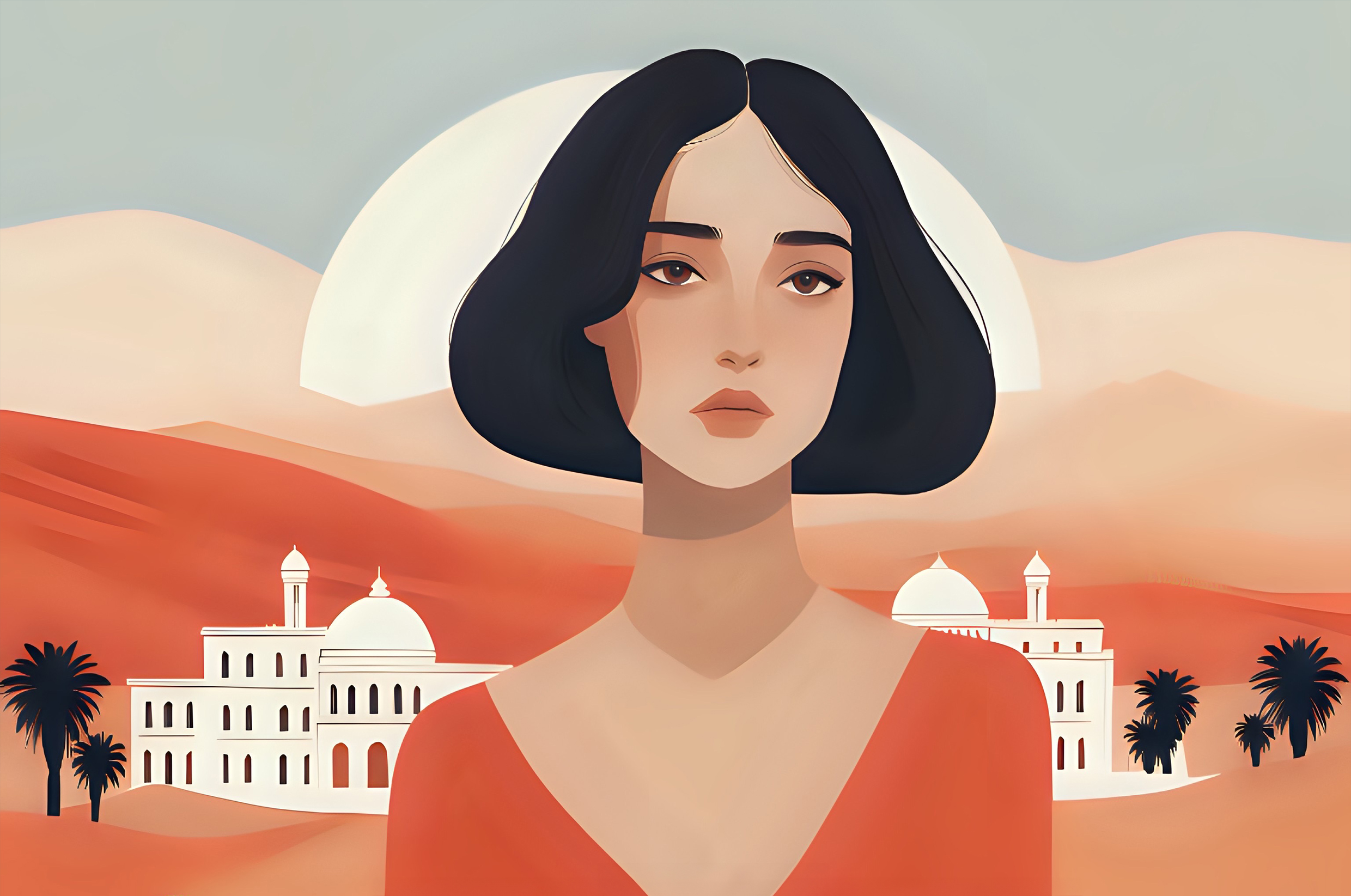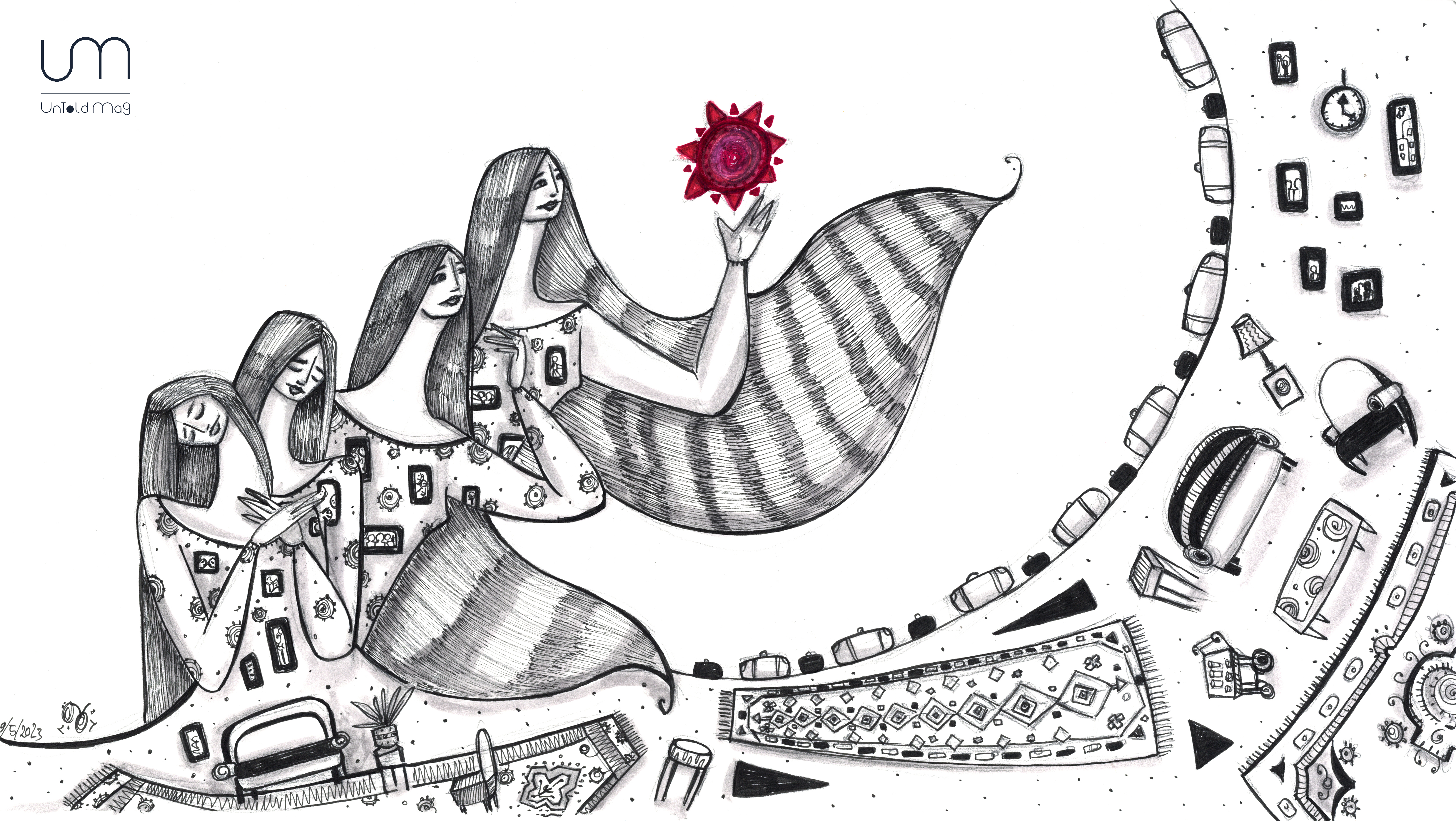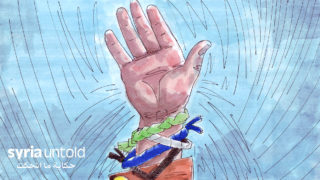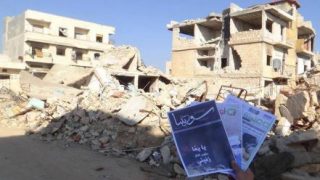The Road to Syria... From Berlin
At five in the evening, I hurried after the Syrian driver toward a one-story government building. He had already gone inside with my travel documents, and I followed him into a large, rectangular room where an official stood behind a glass window. He motioned for me to approach, then asked in a tone that suggested he didn't care much about the answer: “And what do you do for a living?”
Under the supervision of an international security expert, I had prepared a long response and practiced it for the past 24 hours during my journey from Europe to Syria. But the simple phrase “I’m a university student” was enough to convince the Syrian official to return my documents and passport, with the stamp allowing me to enter Syria for the first time in my life.
I sat alone again in a private car, driven by a Syrian man in his thirties. He had taken over the task of bringing me into Syria from a Lebanese driver who had picked me up from Beirut Airport shortly after 3 p.m. The Lebanese driver escorted me to the border crossing between Lebanon and Syria, known as Al-Masnaa. There, I received an exit stamp from Lebanon less than two hours after getting my entry stamp, both for the first time in my life.
Here and There... The Departed and Those Remaining
03 May 2024
However, the smooth entry procedures into Syria at the passport control, the lack of interest from anyone on the Lebanese side in asking about the reason for my visit, and earlier, the brief question from the passport officer at Beirut Airport, who simply asked, “Going to Syria?”, then sent me to find an absent official to buy the entry stamp for Lebanon—all of this made me wonder: Do I look to them like a foreign blogger filming a prearranged video to promote tourism in “safe and secure Syria”?
I wasn’t going to take the risk like the Western and Gulf bloggers and get the visa upon arrival at the Syrian border. With my green Egyptian passport, I doubted they would issue me a visa even if I applied through the Syrian embassy in Berlin. For this reason, I didn’t inform my potential hosts in Syria about submitting my application to the embassy until they found out, after security summoned them to ask about their connection to me. Once the Assad regime confirmed that I wasn’t a threat to Syrian national security, they left me a voicemail on my German number, asking me to go to the embassy to obtain the visa.
I was the only Egyptian among dozens of Syrians crowding at the entrance, and later I shared a seat with them in the packed waiting room. I sat in a corner of the rectangular room, spending the long hours staring at a picture of Bashar al-Assad hanging on the wall in front of me. The staring contest between me and Bashar was interrupted by the sound of the employee calling out my name and country to receive my visa. At that moment, everyone in the room burst into laughter at the “crazy” person who was willingly going to Syria.
It was around six in the evening when the Syrian driver set off on a mountain road in Syrian territory. I sat in the back seat, alert, with a large, maroon-colored handbag on my lap, filled with documents in multiple languages. I was ready to present them to any security officer who might stop the car at military checkpoints, wondering, “What are you doing here?”
At that moment, everyone in the room burst into laughter at the “crazy” person who was willingly going to Syria.
In the back of the car was my suitcase, packed strategically following the advice of my Syrian friends to disguise its contents—from cash and valuable gifts to medications and vitamins—from the prying eyes of security at the checkpoints. “Remove everything from its packaging and spread it throughout the suitcase among your clothes,” they advised. The Syrian driver, holding my passport, was ready to navigate the first of 18 military checkpoints spread over 180 kilometers.
After passing through the first two checkpoints, the driver handed my passport back to me, assuring me that he wouldn't need it again and that I could relax until we reached my final destination. I found it hard to believe the stories my Syrian friends abroad had told me about their experiences entering Syria under the protection of VIP drivers. How could $100 in the summer of 2023, paid to the driver and shared with each military checkpoint we passed, make the entry of a "non-Syrian" traveler like me into a land recently ravaged by war so “invisible”?
Later, I would learn how they manage “their little fiefdom” and witness firsthand scenes that illustrated it as I made my way out of Syria. But at that moment, when the driver turned on the car’s air conditioning to shield me from the heat, my defenses— which had held strong for 48 hours without sleep in preparation for the trip, including moving between the airports of Berlin, Istanbul, and Beirut—finally collapsed. I drifted off to sleep for a few hours before reaching my final destination.
Why Sweida?
At dawn that day, I left my partner in our home in Berlin, just a few days after surviving our first year of marriage (without divorce), and set out alone for his birthplace, which he had left nine years ago and never returned to—specifically, the southern region of Syria, Sweida.
At the beginning of 2023, the idea of traveling to Syria started to cross my mind, driven by both personal and professional reasons. By then, I was considering resuming my PhD studies in a non-Egyptian context, one that wouldn’t stir up my professional and personal traumas. Syria had been the option I avoided since 2018, when I conducted my master’s research with several exiled Syrian journalists in Germany. I felt like an outsider, unfamiliar with the country’s history and present, beyond what I saw in the news. My connection to Syrians in Germany was purely coincidental, the result of moving from Cairo to Berlin two years after the so-called “refugee crisis” in Europe.
However, journalistic curiosity and human empathy led me in the following years to piece together an incomplete picture of Syria through testimonies—some I gathered myself, and most I read, heard, or watched from Syrians of various regions and religious sects. These images were mostly grim, filled with stories of torture, enforced disappearances, and layers of fear enveloping society. Yet, they were also often tinged with a deep nostalgia for the rich and colorful details of daily life, family, and friends before the war.
The image of Syria that I was piecing together was like scattered puzzle pieces, drawn from the stories of my Syrian friends and acquaintances. That was until I lived under the same roof with a Syrian partner from the Druze minority, who had left Syria without his family in 2014. I came to understand exile through his nightmares, which woke him up in the middle of the night, crying and terrified that he might never see his mother again. I experienced his nostalgia through his insistence on sharing meals together while repeatedly watching Syrian TV shows about life in the southern mountains (Al-Kherbeh) and the coastal regions (Dyaa Dayaa). All the while, I tried to decipher heavy Syrian dialects, some of which were so thick that the creators of those shows had to provide Arabic subtitles!
The image of Syria that I was piecing together was like scattered puzzle pieces, drawn from the stories of my Syrian friends and acquaintances.
The puzzle of Syria’s image started to come together when I began my own chapter of introducing him to Egyptian cinema. We watched the masterpiece of political prison drama, We Are the Bus People. “This is the Syria I was born and raised in,” he told me, “where I used to chant every day in the school’s morning assembly, praising the life of the leader, Hafez al-Assad.” I replied in surprise, “You mean you haven’t updated the system since the days of Gamal Abdel Nasser?!”
As I was piecing together the image of Syria in my mind, I was doing the same to understand the community of the Druze, to which my husband belongs, and with whom I want to start a family. This desire was what ultimately pushed me to take this journey alone, to meet his family. But just as my Syrian friends in exile waver in their relationship with Syria—torn between the desire to remember and the wish to forget completely—so did my Syrian partner waver in his feelings about my plan to visit Syria, meet his family, and see where he grew up. He was opposed to the idea, saying, “What will you do there, with the power cuts and constant talk about money and fuel?” Yet sometimes he would change his mind, reminiscing about their home in Sweida, saying, “You’ll love the mountains and nature there”.
Arrival in Sweida
When I finally drifted off to sleep after crossing the Syrian border toward Damascus, the afternoon sun was still strong. When I opened my eyes again, the sky over Syria was tinged with shades of purple and red. I asked the driver, “Are we there yet?”
He explained that we were approaching the entrance to Sweida. At that moment, a rush of adrenaline surged through my body. In just a few minutes, I would be meeting my husband’s family. As we entered the city, moving from the roundabout toward the main street, I noticed palm trees lining both sides of the road, and a warm summer breeze brushed against my skin. For a moment, I felt like I was on my annual family trip to the modest seaside resort of my childhood in Gamasa on the Mediterranean, a place I visited from the early '90s until just a few years ago—a town my Syrian friends told me is similar to Tartus on the Syrian coast. I arrived at the family’s home after eight in the evening. They had spent the day in anticipation and waiting while I crossed airports, borders, and military checkpoints. I was greeted not only with their warm welcomes and hugs, but also with Kibbeh, Ma’amoul, bitter Arabic coffee, and conversations that lasted until two in the morning, starting with a simple question: "How did you find our son?"
It seems that the adrenaline rush in my blood was contagious, as the family I was staying with woke me up the next morning at 7 a.m. to have coffee with them before one of them left for work. This time, breakfast was waiting for me—olives, za'atar, cheese, and the remaining kibbeh. My social schedule began immediately and continued until the evening, as neighbors and acquaintances came to meet “our daughter-in-law from Germany”. However, it seemed that the neighbors were more curious to meet “our daughter-in-law from Egypt,” or rather, “the one from a different sect”.
By the next morning, I still hadn’t seen much of Sweida beyond the family’s guest room. That day, I began a whirlwind tour of the city’s markets, starting with the purchase of a Syrian SIM card. This was followed by a walk through the markets, where we took a taxi from the house to the market for less than half a euro, around 5,000 Syrian pounds. This became my main mode of transportation during my stay, which lasted only a few days. However, the fare varied from one driver to another throughout the day, each justifying it by the fluctuating “price of diesel”, while my companion whispered in my ear, “People are greedy.”
The Eternal Leader… Burned Forever
We stepped out of the taxi and into a crowded square, where the flow of pedestrians merged with the chaotic movement of cars and roaming fruit and vegetable vendors. I navigated through the crowd with serpentine agility, recalling skills I had honed in the narrow alleys of my small town in the Nile Delta, and later refined in the bustling streets of Cairo, where I worked in the field for several years.
As my companion and I crossed to the other side of the square, I took a moment to observe my surroundings. Everything felt familiar to an Egyptian like me—from the faces to the old residential buildings, no more than two or three stories high, and the vintage yellow taxis. This sense of familiarity persisted until I looked up and saw the towering statue at the center of the square, depicting a horseman wielding a sword—Sultan Pasha al-Atrash. But what caught me by surprise was a colorful painted portrait of Hafez al-Assad, hanging on an abandoned building with shattered glass windows, inscribed with the words “Sweida Governorate.”
I would later learn, after leaving Syria, that a nearby square called “Al-Seir” would soon be renamed “Al-Karama Square,” (Dignity Square) marking Sweida’s official joining of the Syrian uprising that began in 2011. I was fortunate to witness the image of the “Eternal Leader” before it disappeared “forever,” consumed by the flames of protesters' anger, just as they did with the portraits of his successor and the Ba'ath Party headquarters in the governorate.
The Druze Diaspora and the Dream of Return and Stability
I turned my back on the statue of Assad guarding the square and headed past Saraya Cinema to exchange dollars on the black market in broad daylight. We easily found a man sitting behind a desk in the middle of a store filled with household and electrical appliances. As I sat in front of him, people came in to inquire about the arrival of foreign remittances from all over the world. These remittances have been the lifeline during the war years and beyond. I was personally carrying different amounts of money to deliver to the families and acquaintances of my Syrian friends in Germany.
However, the people of Sweida had been accustomed to these remittances long before the war, due to early migration, making the community there, in a sense, a diaspora. I had read about this in the novel Land of Exiles by Syrian novelist and doctor Najat Abdul Samad, a native of Sweida and a resident of Berlin. The novel discusses how migration had been the choice of the majority since the 1960s. My partner, who moved to Damascus at the age of eighteen to study and work before his exile in Europe, attributes this to the fact that the mountainous province relied primarily on agriculture as its main source of income. With the advancement of industry and technology, there was little state interest in developing new sources of income that could provide the youth with opportunities to stay in the province. As a result, most young people migrate outside of Syria in search of work to support their families back home.
There are also historical reasons dating back to the Ottoman occupation when the Druze preferred to avoid various forms of oppression. The Ottoman state at that time demanded their participation in its wars in the Balkans and other distant lands, leading to the migration of young men who did not want to fight in wars unrelated to their national cause in Syria, a point also confirmed by Abdul Samad in an interview.
As a result, parallel Syrian communities of Druze origin have formed across the globe, from Venezuela, the United States, and Australia to the Arabian Gulf, creating the Syrian Druze diaspora. This image took shape in my mind through the stories of my Druze acquaintances in Germany about their ancestors who migrated to distant lands. Among them was a Brazilian grandmother who moved with her Syrian husband to Sweida in the late 19th century. The long threads of migration stretched into the 20th and 21st centuries, manifesting in what I saw with my own eyes in various neighborhoods of Sweida: uninhabited concrete residential buildings, left unfinished in the hope that one day their owners would return from abroad to complete and live in them.
By chance, I met several of these migrants who dreamed of returning and settling down, particularly those who had come back from the Gulf after spending half their lives there—between 35 and 40 years—in professions ranging from freelance work like construction to educational fields such as teaching. When the time finally came to reap the rewards of their “temporary” exile with a comfortable retirement back home, surrounded by children and grandchildren, after securing a five-story house, a modern car, and a lifetime’s savings, the war struck and shattered their dreams of stability.
“I'm caught between two fires. Should I gather everything I own and spend it to send my son to Europe for his and his children's future? At the same time, I can't imagine living at this age without my grandson, whom I returned to after a lifetime abroad. I’ll die if I wake up and don't find him in front of me”.
“I'm caught between two fires. Should I gather everything I own and spend it to send my son to Europe for his and his children's future? At the same time, I can't imagine living at this age without my grandson, whom I returned to after a lifetime abroad. I’ll die if I wake up and don't find him in front of me”. This is what A.K. shared with me, leaving me without an answer to the question: If migration started decades ago, when will it ever end?
Their Family’s Fiefdom!
I had repeated the experience of exchanging dozens of dollars into bundles of Syrian pounds (bearing the images of the two Assads) on the black market in broad daylight. Later, I would learn, after a more secretive and stressful experience doing the same in Damascus, one of the fundamental differences between Sweida and the capital. As my Syrian partner described it, “The country has no rule of law. Outside the regime’s control, only customs and social traditions rule.”
Upon entering Sweida, I had already noticed the near disappearance of the regime’s military checkpoints and the reduced presence of Bashar al-Assad’s images. However, their presence was felt again through countless images of him and his father on the devalued currency.
I later learned that the images of Bashar al-Assad alongside another man in military uniform, which I saw at nearly every one of the 18 checkpoints on my way to Sweida, were actually of his brother, Maher al-Assad, the commander of the Fourth Division. This division controls the lucrative trade at these military checkpoints, extracting various forms of bribes from motorists, ranging from cash to packs of cigarettes. I thought to myself, “It really is their family’s fiefdom!”
What I whispered to myself, I found others in Sweida saying openly and even more boldly. For example, they would refer to him as “the buried” in public, without fear of being overheard—despite the famous Syrian saying, “the walls have ears”. I later realized that this marked a fundamental difference in the atmosphere of fear between Sweida and Damascus in the social circles I encountered. My partner attributed this lack of concern about voicing opposition in Sweida to the fact that the city had been outside the regime’s control for several years, paving the way for the 17 August protests last year.
In the weeks leading up to the demonstrations, the social network of those who hosted me introduced me to people from various political spectrums. This opportunity, coupled with the loosening of the security grip around the city, allowed me to listen to their “contradictory” accounts of the “eternal” Assad regime, the war, and the revolution in a province where the majority of the population belongs to a religious minority that has not collectively risen against the regime since 2011.
H.M., a man in his sixties who had been a member of the Ba'ath Party since the 1970s with hopes of rising to a leadership position, still defends what he calls the “previous leadership” in the face of the “events” (the protests). He said: “We never heard of anyone who didn’t do something wrong being taken to prison”, and one of the others present at the evening gathering agreed, adding "Because they gave them a little freedom, they turned against him”.
However, as soon as the gathering expanded to include another man in his sixties, who proudly recounted his own torture in his youth in the prisons of the “buried” Hafez al-Assad, H.M. softened his stance a bit, saying, “There were mistakes”, but he attributed them to the “system” acting “behind the president's back”.
Amidst the polarized voices on both sides of the regime, I encountered many who were indifferent to politics, focused instead on making the most of the few hours when electricity was available and trying to stave off hunger with a “vegetarian” diet. In this daily struggle for survival, humor was the oxygen of life. As one woman told me in an Egyptian accent, “We're just hanging on out of curiosity; we want to see how this series ends”.
This “series” included another epic chapter, recounted with pride during evening conversations with several residents of Sweida—the city's resilience against the 2018 ISIS attack and their ability to drive the militants out from the outskirts. By doing so, they avoided the fate of other minorities who fell under ISIS control, such as the Yazidis. The stories of Druze resistance against aggressors extended to current events that coincided with my visit. One young man said to his grandfather, “Did you hear what the mountain youth did to the Zionists today?” referring to news circulating in the media and on social media about protests by the people of the Golan Heights and their clashes with Israeli occupation police over the wind turbine project on their agricultural lands.
As I wandered through Sweida and later on my way to Damascus, I realized that these talks of “resistance” were an attempt to reclaim a sense of “dignity” that had been lost in a country where Russian military vehicles roamed the streets.
In the days that followed, as I wandered through Sweida and later on my way to Damascus, I realized that these talks of “resistance” were an attempt to reclaim a sense of “dignity” that had been lost in a country where Russian military vehicles roamed the roads.
Ancient Ruins without a State
On my trips to and from the market, which I visited several times during my short stay in Sweida, the taxi would pass through another busy square crowded with taxis and street vendors, known as “Mashnaqa Square” (Hanging Square). On either side of the square stood a collection of residential buildings, varying in height, size, and architectural style, creating a visually jarring scene for my European sunglasses but one that felt familiar to my Egyptian eyes. What wasn’t familiar at all was what stood in the middle of the square.
“Are those ancient ruins in the middle of the market?!” I asked my companion.
In the center of the square were the ancient remains of a city gate from a bygone era, made of the black stone that Sweida is famous for. For a moment, I felt as if I were wandering through the streets of Rome, an open-air museum, but I was quickly brought back to reality when I took in the state of the ancient gate. It was surrounded by garbage and overgrown weeds, blending with the uninviting surroundings: empty concrete buildings and old, abandoned houses with open windows.
In response to my surprise at finding such a ruin in the middle of the market, they explained that their city, like other Syrian cities such as Palmyra, was once part of the Roman civilization. They promised to take me to visit one of these archaeological sites.
An Unexpected Guided Tour of Qanawat's Ancient Monuments
One evening, we all dressed up for the occasion and set out by car on what’s known as the Qanawat Road, just outside the city. When we arrived at our destination, we were greeted by a complete archaeological site, featuring the remnants of a temple with gates, walls, and Roman-style columns. Once again, I felt as though I were visiting an ancient site in Rome or wandering the streets of Alexandria. But, unlike those cities, this site was not only devoid of tourists but also showed no sign of any state presence.
The site, lacking any signs indicating its identity or visiting hours, was secured by a rusty gate, locked with heavy chains. We gathered in front of it, wondering how to get in. At that moment, a Syrian woman appeared with a key in hand. It seemed she had spotted us from her kitchen balcony and came running, so quickly that she hadn’t even changed out of her slippers!
She spoke with a strong Sweida accent, greeting those with me with phrases like “Ya Kabeer al-Qadr” and “Ya Kabeerat al-Qadr” (expressions of high respect). She introduced herself as the employee in charge of the site! Quickly, she turned into an enthusiastic tour guide, eager to explain the history of the archaeological site to the Egyptian visitor. The site featured Roman columns at the forefront and an abandoned single-story building with broken windows at the back. The woman was incredibly friendly, even taking group photos for us, and we ended our tour at sunset with a short break under the shade of a tree rooted in the history of the place, surrounded by remnants of snacks and drinks. She also shared sips of coffee from a small thermos that one of us was carrying. As we exited through the same rusty gate, I noticed the once-abandoned archaeological site had become a picnic spot for the local neighborhood, with families enjoying snacks while their children ran and played among the Roman walls and columns.
The tree we sat under, sipping tea with the Syrian employee, facing an abandoned room with broken windows (Qanawat Ruins).
Beyond Familiarity
On the evening of my fifth and final night in Sweida, as I packed my suitcase in preparation for the next leg of my journey to Damascus, I reflected on the preparations I had made for my visit to Sweida. I had anticipated feeling like an outsider in terms of the customs, traditions, and geography of the place. To prepare, I had read extensively, talked to friends, and consumed various media about the city and its people, all in an effort to be ready for any differences or surprises I might encounter there.
But from the moment I first set foot in the city, I felt an inexplicable sense of familiarity, as if I had known this place since childhood. Despite this, I couldn’t fully trust the feeling and kept searching for differences. It wasn’t until the last day of my visit that I saw Sweida from above. That morning, we climbed to the roof of the two-story house, and from there, I could see the sprawling rural side of the city stretching as far as the eye could see. Scattered low-rise homes dotted the landscape, with olive trees interspersed among them, and in the distant horizon, hills appeared under a clear blue sky. I closed my eyes, took a deep breath, and filled my lungs with the air of Sweida, feeling something beyond just familiarity. It was a feeling difficult to describe, but I’ll borrow the words of Najat Abdul Samad, a native of Sweida and an immigrant, who tried to capture this sensation in a television interview when asked what she missed most about her life in Syria. She said:
“I miss the air in Sweida... It’s a feeling you live but can’t quite describe. I feel as though my lungs open not just to oxygen, but to life itself. It’s like how a person feels connected to something called the umbilical cord. No one sees it; it’s invisible, but it’s that feeling, that longing for something that sums up, for me, the flow of breath, how it spreads through every cell, every atom of your being. It’s like a passport that allows you to access the closest and most intimate meanings in your life”.


